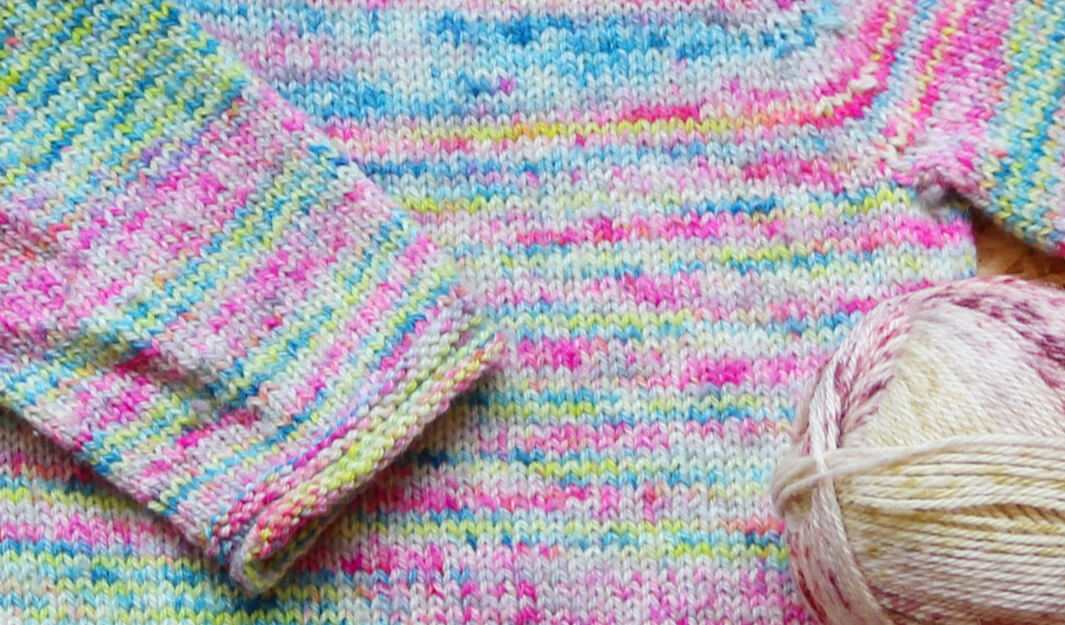It’s coming up to that time of year when we put our woollens to the back of the closet until next autumn and bring out our summery cotton knits. However, it’s important to store our woolly knits correctly, in order to save pulling them out next chilly season to find that the pesky moths have gotten to them first.
In this blog post we’ll outline some steps to take to best protect your knits from moths.
Why Do Moths Like Wool?
Firstly, not all moths eat your knits. It is a particular breed called Tineola Bisselliella, also known as clothes moths, wool moths or webbing moths.
It’s not actually adult clothes moths that do the damage. It is their larvae. They feed mainly on animal fibres such as wool, silk, leather, fur and feathers. These animal products contain keratin which is a fibrous protein that the larvae can digest.
This does mean that plant based and synthetic fibres tend to be left alone, unless mixed with animal fibre. Moths will still lay their eggs in these fibres if they have heavy food stains or body oil on them however, so it’s still in your best interest to treat any wool blends as you would your pure wool items.
Prevention
The best way to protect your knits from moths, is moth prevention. Following the right precautionary steps means you should be able to avoid getting moths in the first place. Preventing moths is a lot easier than having to deal with an infestation, which can be very difficult and time consuming to handle.
Though a lot of people’s go-to for moth prevention is pheromone traps, it’s actually only the male moths that these attract. The female moths will remain undeterred and continue to lay eggs. So for this reason they cannot be solely relied upon to keep the moths away from your knits.
Washing
The first thing to do to protect your knits from moths, before putting away any unseasonal knits, is to give them a good wash. Moths are more attracted to soiled or stained knits, they particularly like our body oils, so ensuring that they are clean before being put away is a good first step to deterring moths.
Our Soak wool wash is a great option for anything that needs to be hand-washed. As well as coming in multiple scents (there’s a scentless too), it’s a no rinse detergent which makes hand-washing a hassle free experience.
(For any knits that can be machine washed, remember to always do them on a gentle cycle to avoid any heart breaking shrinkage).
Cleanliness
The next step to take to protect your knits from moths is to give your draws and cupboards or anywhere you store your clothes a good clean. Moths are attracted to dusty and dirty areas as well as wool. Use a vinegar based cleaning spray to wipe down any surfaces, before thoroughly cleaning that off with warm soapy water.
Cleaning out your drawers and cupboards a couple of times a year is a good habit to get in to for moth prevention. Moths also like to be left alone, so regularly moving things in and out of your closet is a good deterrent.
Storage
There are multiple ways to store your knits to protect them from moths. If all of the above steps have been taken: you are regularly taking these pieces in and out of your wardrobe, giving draws and cupboards a clean, and keeping the knits themselves clean, you can opt for natural moth repellents such as lavender and cedar. Put a lavender bag or cedar balls in with your woollens, which you can make even more potent by adding a few drops of the essential oils to. This will also make your clothes smell lovely at the same time.
If you want to take more precautions, keep them in plastic storage boxes that fully seal, or in zip lock plastic bags (ensure there are no holes in them).
How To Deal With a Moth Infestation
Once you have found you have moth damage to anything, it is important to act straight away before the situation worsens.
Isolate any affected items. Moths do not like very hot or cold temperatures. We can use this to our advantage and put any moth eaten pieces in the freezer, in a sealed bag. The extreme cold will kill any larvae in a couple of days. If you live in a hot climate you can also lie anything in direct sunlight for a few days which will have the same effect.
Thoroughly vacuum any affected areas.
For any heavily affected or precious items professional cleaning is recommended.
Finding a moth hole in a favourite jumper, or anything else for that matter, can be utterly heart breaking, so we hope this blog post will help whoever needs it to protect their valuables from unwanted holes.
In The Meantime… Happy Knitting!






 No products in the basket.
No products in the basket.